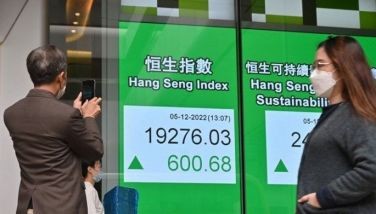Infrastructure

Tuesday afternoon in Bacoor, Cavite saw me in a mad scramble to leave the faraway province. It was 4 p.m. and my meeting had just finished. I didn’t want to be stuck in the rush hour traffic on my way back to Quezon City, so I jumped into my car and rushed out of the parking lot.
I braced myself for the agonizing, arduous and long drive back home. I even bought to-go food because I knew I might still be stuck in traffic when dinner time comes.
Surprisingly, Waze led me back home in just one hour – a rare, unbelievable dreamlike feat here in this country where traffic is so bad we’ve been touted by novelist Dan Brown as the Gates of Hell.
Credit goes to the new roads, some of which I passed through for the first time. One is the Daang Hari-Molino Bypass Road which opened to motorists last year.
I’m not sure how far the bypass road was, but it was enough for me to have a smooth drive all the way out of Daang Hari and eventually to CAVITEX, a 14-kilometer long limited access toll expressway linking Manila to Cavite, operated and maintained by the Pangilinan Group’s Metro Pacific Tollways Corp.
Driving along CAVITEX led me to San Miguel Corp’s Ninoy Aquino International Airport Expressway and then to its much-raved-about Skyway Stage 3, all the way back to Quezon Avenue.
All these new roads and highways are very much welcome developments. For decades, we have lagged behind our peers in the region in terms of infrastructure projects and we still do, but as a motorist, I will count these small victories.
Golden age of infrastructure
The Duterte administration vowed to usher in the golden age of infrastructure in the country and, while the gilded age is certainly not yet here, we are seeing baby steps toward this goal.
There is a long way to go and much remains to be done.
During a recent webinar organized by Philippine STAR’s PropertyReport, in partnership with Ayala Land’s Avida, Build Build Build Committee Chairperson Anna Mae Lamentillo said the government wants to build 25,343 kilometers of roads, 5,271 bridges, and 9,797 flood mitigation structures.
One flagship project is the Luzon Spine Network. This is the Department of Public Works and Highway’s flagship road project, which envisions 906 kilometers of high standard highways and expressways in Luzon, which is about twice the 382-kilometer stretch of existing highways in the island.
Alongside this ambitious project, the DPWH is also working on its grand EDSA Decongestion Masterplan, which is likewise composed of new infrastructure projects.
Closer to home
More than reducing travel time, the new road networks will enable Filipinos to become closer to home by allowing workers to access jobs in Metro Manila without having to relocate and settle for cramped and costly living spaces.
Once complete, those who live in the outskirts of Metro Manila will no longer have to brave an arduous commute to get to their place of work. Laguna, Cavite, Sucat, Alabang, Tagaytay and Bulacan, for instance, are slowly becoming short drives, thanks to new road networks.
In the longer term, such infrastructure projects should pave the way for growth outside the metropolis.
Businesses will finally look beyond Metro Manila. Homeowners in nearby provinces will also find the value of their properties appreciate as new roads, bridges, and other infrastructure projects are built.
The new road networks will surely decongest Luzon and, hopefully, improve the lives of Filipinos.
But, as I said, much remains to be done.
Government spending
The government needs to spend more on infrastructure and not just rely on the private sector.
Infrastructure spending dropped for the fifth straight month in November 2020 due to disruptions caused by the COVID-19 pandemic and the budget cuts implemented earlier last year.
Latest data from the Department of Budget and Management (DBM) showed infrastructure and other capital outlays declined 50 percent to P40.3 billion in November from P80.9 billion a year ago. It was also down 22 percent to P548.8 billion during the 11-month period.
As I’ve said before, the government should have allowed public construction to proceed, especially during the lockdowns when there were very few motorists.
Moving forward, the government really needs to step up state spending on infrastructure. As a percentage of the economy’s output, infrastructure spending in the Philippines remains below five percent while our neighbors like Vietnam are investing north of five percent.
Bad governance
Another major problem is bad governance. Projects are always caught up in red tape and bureaucratic inertia. To be more precise about it, it’s simply corruption in so many forms – from the national agencies and the local government units all the way to the barangay level.
Patronage politics is also a major culprit. Why, for instance, do some administrations favor one conglomerate or business group over another?
Until all these fundamental problems are addressed, any administration’s infrastructure program will continue to face roadblocks and we can only wallow in envy when we visit neighboring countries and ply their smooth roads.
Iris Gonzales’ email address is [email protected]. Follow her on Twitter @eyesgonzales. Column archives at eyesgonzales.com
- Latest
- Trending



























